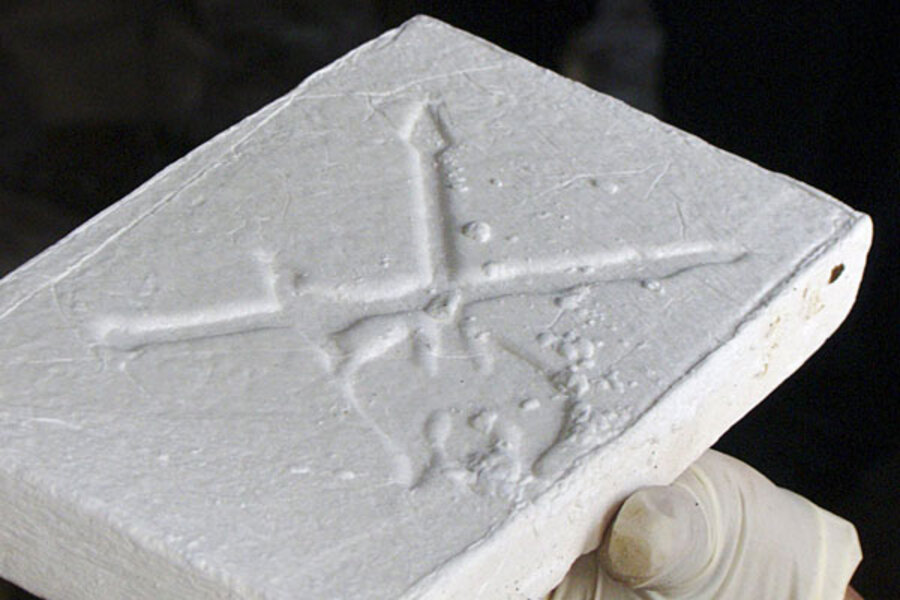Mexican drug traffickers set up new cells in Central America
Loading...
| Mexico City
Mexico’s drug traffickers may be selling hard drugs to their northern neighbors, but they’re exporting a far more dangerous product south of the Mexican border: their very own franchise.
One of the most violent drug gangs in Mexico, Los Zetas, has set up cells in several Central American countries. They’ve recruited local former military agents to their training camps, terrorized undocumented migrants, and lured poor farmers and youth to work as hired hands, just like they’ve done in Mexico, experts say.
The latest sign of how entrenched Los Zetas have become: Alleged members of the group forced radio stations in a Guatemalan province earlier this week to broadcast a threat of “war” against civilians. Their conditions were unclear, but they appeared to be calling on law enforcement to cease targeting traffickers.
The radio message accuses Guatemalan President Alvaro Colom of accepting $11 million in drug money and warns of a war at malls, schools, and police stations. “Many people will die at meeting centers in coming days,” the message says.
If the threats are indeed carried out, it could escalate drug violence in the region in a way not seen before.
The threat followed President Colom’s declaration of a siege Dec. 19 in the northern Alta Verapaz province, a smuggling route where Los Zetas have a significant presence. The declaration allows police to conduct warrantless arrests and searches. The president reportedly said he would not let threats shake his resolve against Los Zetas.
How Los Zetas operates
Made up of former military officers who served as strongmen for Mexico’s Gulf Cartel in the late 1990s, Los Zetas have grown into a force all their own. Using unparalleled brutality to establish their authority – beheading rivals and massacring migrants who won’t join them – the group branched out into almost every form of organized crime in Mexico.
Apart from drug smuggling, they extort businesses, school teachers, and undocumented migrants, steal oil from pipelines, and dabble in CD piracy and sex trafficking, security analysts say. The gang’s loose-knit operations and alliances with local thugs have helped them gain more territory and power, and they fully separated from the Gulf Cartel last year, the analysts say.
Reports of training camps in Guatemala surfaced as early as 2006, along with rumors of alliances with former Kaibiles, Guatemalan special ops forces, says George Grayson, a Mexico expert at the College of William & Mary in Williamsburg, Va.
Talks to form anti-cartel alliances
The Zetas were soon spreading to Honduras and El Salvador, both of which have recently expressed concern about a rise in bloodshed in their already violent borders. The Central American countries and Mexico are in talks to form anti-cartel alliances, with Honduras and Mexico forming a commission Wednesday to prevent abuses against migrants crossing Mexico to the US border.
In Guatemala, the Zetas have recruited among the rural poor, who cannot make ends meet working on coffee farms, says Jorge Morales Toj, an activist with the Guatemala City-based Maya Youth Movement. Often comprised entirely of local ex-military and ex-police, the cells appear to be entirely homegrown, with no overt Mexican chain of command, Morales Toj says. They roam the streets packing heavy weaponry, intimidating residents, and forcing some to hand over their homes, he says.
Guatemala’s culture of impunity, along with a weak justice system and corrupt officials make the country a prime target for cartels, says Anita Isaacs, a Guatemala expert at Haverford College.
Isaacs blames the Zetas’ southward expansion on a “balloon effect,” where pressure on the cartels from authorities in Mexico has driven them to other parts. Grayson, who is coauthoring a book on Los Zetas, disagrees that Mexico is succeeding in driving cartels away, but that they are expanding in order to consolidate important drug routes between Honduras and Mexico.
Malcolm Beith, a freelance journalist and author of a book on the drug war “The Last Narco” says it is up to Mexican authorities to curb the Zetas expansion: “If they manage to control coordination between what are effectively independent – albeit ruthless – gangs, then the Zetas won't be able to consolidate in Guatemala and other Central American nations.”





